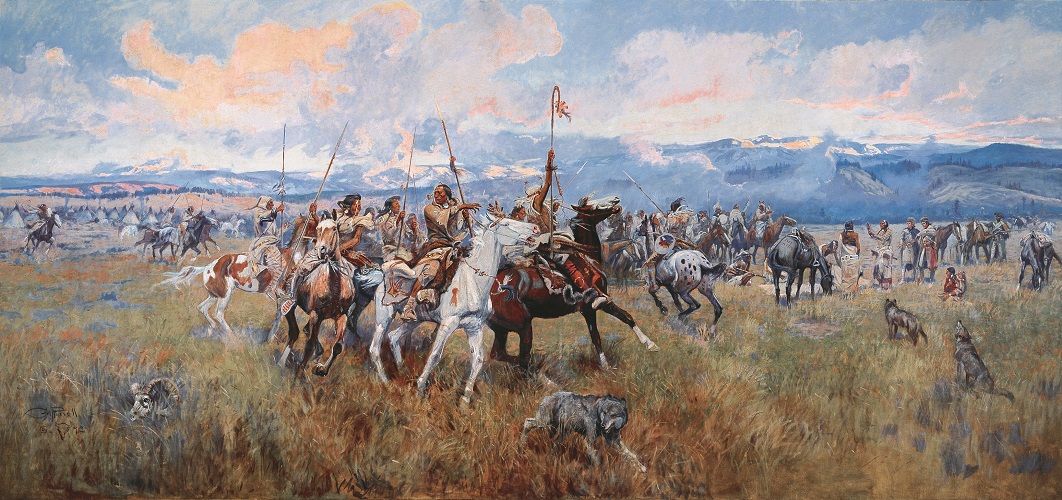
Charles M. Russell, oil on canvas, 1912, 140" x 296"
(Photo by Don Beatty)
Lewis and Clark Meeting Indians at Ross’ Hole depicts a fortuitous encounter between Thomas Jefferson’s Corps of Discovery and the Salish Indians in the Sula Basin in the southwestern corner of Montana. The meeting, which occurred in September 1805, was one of enormous strategic importance as it enabled the expedition to secure the horses and directions needed to traverse the Bitterroot Mountains before winter snows would make travel impossible. As art historian Patricia M. Burnham observed, the mural “is grander than could have ever been anticipated. . . . With a sweep of horses, Salish warriors, and tilted lances in the center foreground, Russell brought the action into the visual space of the assembly. By relegating Lewis and Clark to the quiet of the middle ground at right, Russell gives over the most important part of the picture space to Montana’s original inhabitants. Nowhere else in the Capitol is the Indian presence in Montana so celebrated.” Measuring approximately twelve feet high by twenty-five feet wide, the painting is the largest that Russell ever produced; its completion required that Russell raise the roof on his log cabin studio in order to accommodate it.
